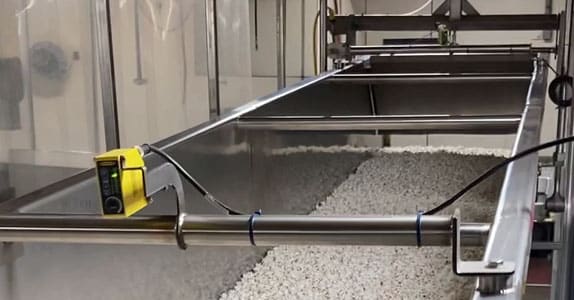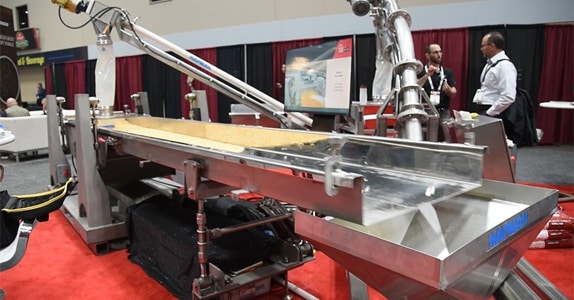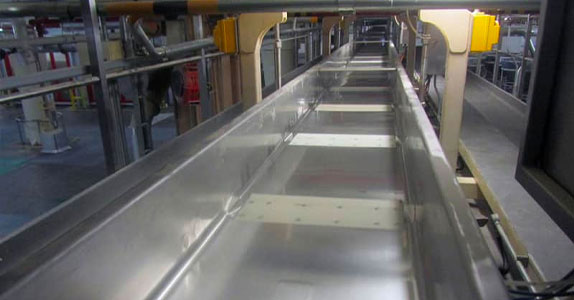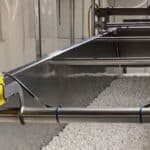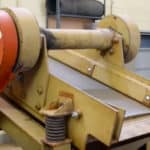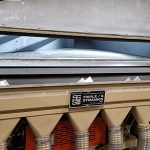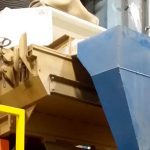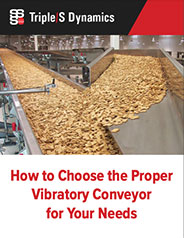Old Dutch Foods
Maximize Line Yields and Reduce Product Degradation
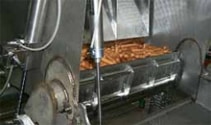

Manufactures of skinless hot dogs have traditionally used portable bulk containers or belt style surge conveyors to accumulate the cooked hot dogs after the temporary plastic casings are removed and the product is ready to be fed to the packaging equipment. This manufacturer, like many others, used belt conveyors because they allowed for less upfront expenses over other conveying options. As this manufacturer found out, the skinless hot dogs were dragged along the interior walls’ belt line seams. The fragile product can be easily deformed or broken at this stage in the process and that is where a horizontal motion accumulation conveyor offers unparalleled performance in maximizing line yields by significantly reducing product degradation.
The horizontal motion accumulation conveyors consist of a seamless, sanitary conveyor trough and a differential horizontal motion drive unit. The reliable horizontal motion drive unit provides a gentle slow forward, quick return horizontal differential conveying action to gently accumulate and convey product. The horizontal motion drives can be gear or belt driven and are mechanically simple devices usually consisting of 4 eccentrically weighted shafts which are balanced to eliminate vertical motion. The low operating speed of the drive increases the life of the drive components like the bearings, gears and belts. The horizontal motion accumulation conveyor is designed to meet stringent USDA standards and is constructed of all stainless steel to accommodate the heavy wash down requirements.
Under normal operating conditions, product like the hot dogs, would be conveyed directly through the horizontal motion accumulation conveyor’s trough to the downstream packaging equipment. However, if an interruption occurs such as a film change in the packaging process, a pneumatically actuated product dam located near the horizontal motion accumulation conveyor trough discharge is closed and the conveyor drive speed is slowed, which allows the product to gradually fill the conveyor trough until packaging is back online. The conveyor trough discharge is also equipped with a pneumatically actuated nose gate that works in conjunction with the product dam to provide a controlled discharge of the accumulated product. Level sensors are provided along the conveyor trough length to provide feedback to the customers control system of the actual fill level of the conveyor trough. This is to prevent overflow of the accumulated product.
Horizontal motion accumulation conveyors are available in sizes ranging from 20 cubic feet to over 200 cubic feet and the conveyor trough can be easily configured to fit the customer’s available space by varying the width, depth and/or length of the conveyor trough. The hot dog manufacturer had a 3 foot wide, 2 foot deep and 28 foot long horizontal motion accumulation conveyor installed. The storage volume was 111 cubic feet. The horizontal motion conveyor drive can be mounted at either end of the conveyor trough or above or below the conveyor trough.
Horizontal motion accumulation conveyors can be floor supported on stainless steel structures or ceiling supported from stainless steel suspension rods.
In addition to the gentle product handling advantages of the horizontal motion accumulation conveyors, the one piece continuously welded horizontal motion accumulation conveyor trough does not have the numerous, hard to clean, small crevices that are inherent in plastic belt style surge conveyors and there is no chance of undetectable plastic belting pieces accidentally getting into the product stream.
Horizontal motion accumulation conveyors can also be provided for long conveyor runs exceeding 200 feet with a single drive and the conveyor troughs can be equipped with drop gates for distribution applications.
This hot dog manufacturer was pleased with the horizontal motion accumulation conveyors because it made for a more automated system. It eliminated the need of removing the belt for sanitation cleaning and also eliminated the extra handling of the product into temporary storage boxes. Now the hot dogs are fed to the packaging equipment and stored in the same trough.

